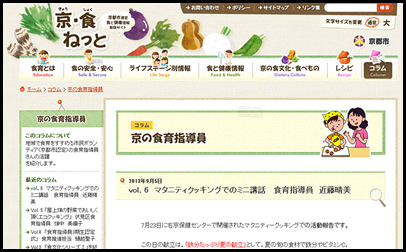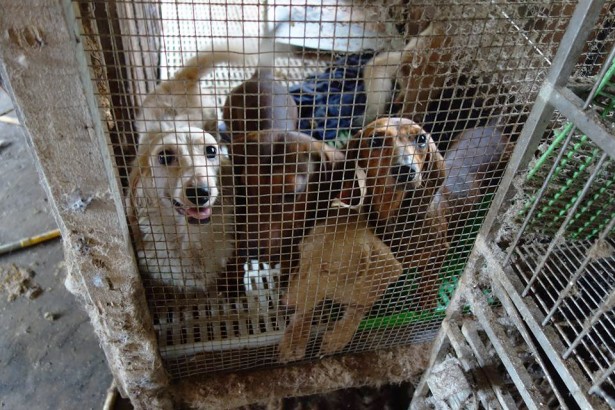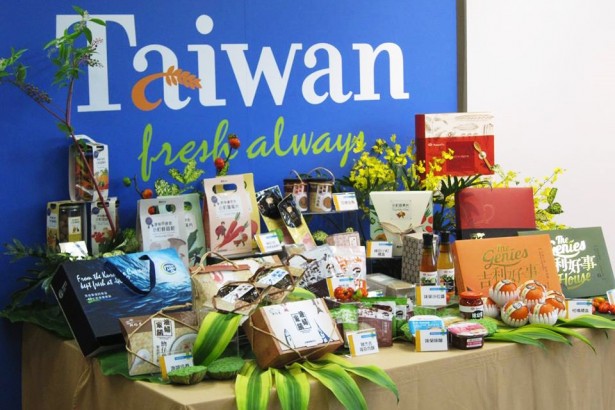Food and Education as the Core concept of Local Development Plan & # 8211; take the Kyoto Municipal Plan of Japan as an example
Share272 + 111Tweet1 EmailShares 284
The concept of overall community building in Taiwan mainly comes from Japan, but the model of promoting community building in Taiwan and Japan is quite different. At the beginning of social creation promotion in Taiwan, the government and scholars crossed the middle bureaucratic level and went directly to the local level to provide guidance. Therefore, community building as a whole is generally recognized as a bottom-up movement in Taiwan.
But in this bottom-up process, can the value of innovation become the driving force of citizen participation? How much structural reform can a bottom-up community-building movement bring? When we try to put forward sustainable development plans through social development, why do the biggest obstacles often come from the local middle bureaucracy?
The author has participated in / observed the community building in Taiwan for many years and found that there are two problems that must be paid attention to in the next stage of community building:
First, although Taiwan's social construction pays attention to pluralistic voice, because at the initial stage of social construction, it was adopted to directly empower local residents beyond the intermediate bureaucratic system, so as to seek the spirit of citizen participation blossomed everywhere. As a result, there is not only a lack of close connection between the plans put forward by each place and the overall development goals of the country, but even we have trained many people with progressive values in local communities. But our county, city and township governments are still ossified and corrupt.
For example, we can often see that communities attract people to watch and learn because residents promote ecological conservation, ethnic cultural reconstruction or eco-tourism. At this time, local governments not only fail to learn new values from local actions, but also take advantage of this to expand development and invest more unnecessary hardware development. Under the circumstances of the constant tug-of-war between "progressive citizens" and "backward governments", it is very difficult for Taiwan society to develop towards a good and circular society.
On the other hand, the social construction model in Japan is what I call the "middle-to-bottom" model, that is, the country first invites scholars to consider the trends of the times and the needs of society, and to set the vision and development goals of the country within a decade, under the overall development goals of the country, first enhance the understanding of the civil servants of the middle-level bureaucratic organization to the new overall national development plan, and then let the local governments according to the conditions and characteristics of their local resources. The formulation of local development directions and goals can be used as a guide for local self-government organizations such as villages and towns and non-governmental organizations to think about more detailed ways to promote them. Such a local development plan not only responds to the needs of the people's livelihood, but also reflects the macro goals of national development, and at the same time avoids the problem of "backward government" and "progressive citizens".
Second, although social creation in Taiwan appears to be a bottom-up movement, the start of community building is often guided either by government subsidy programs or by scholars or intellectual elites. And these scholars or counseling units that guide the construction of the community often have a preset purpose, so in fact, local residents lack opportunities for endogenous creation, which leads to the expected citizen participation actions of scholars / counseling units. or do residents internalize these innovative values and act spontaneously through self-awareness? This is very worthy of discussion.
The biggest difference between the overall community building in Japan and Taiwan is that on the one hand, local governments accept the vision put forward by the state, and on the other hand, residents also take the initiative to contact and study foreign examples, so ideas and methods are created by the localities themselves, not by the state or scholars (Wu Lingzhu, 2002) [1].
Since 2006, Japan began to comprehensively promote the food and education program. The author has mentioned many times in many articles that Japan's food education promotion model is similar to its past model of promoting "community building" (figure 1). However, in order to prevent people from using Taiwan's social creation model to imagine Japan's social creation, and feel that there is a gap, so in this article first explain the difference between Japan's and Taiwan's social creation model.
The Beijing Food and Education Promotion Program in Japan


Second, expand the promotion of food and education to different generations of families and communities.
The practice of feeding is based on the family and needs the support of the community. From infancy to advanced age, every citizen should practice the desired diet according to his or her family's life stage and style of life (life style), and strive to extend this practice to the community. Promotion strategies include: family cuisine and nutrition classroom, cooperation with universities to promote food education, food delivery for the elderly and the disabled, family visits for newborns, and so on.
Third, expand the promotion of food and education to students in nurseries, kindergartens and schools
In addition to families and communities, nurseries, kindergartens and schools are also important fields for children's food and upbringing. These educational units play an important role in promoting children's concern for diet, developing their good eating habits and rich human nature. Educational units should cooperate with families and communities to transmit the concept of food and education to the next generation. Specific strategies include: encouraging nurseries to promote distinctive food education programmes, promoting primary schools to study food education courses in Japanese restaurants, parent-child food education courses, and so on.
Fourth, combine the promotion of food and education with the consciousness of environment and traditional culture.
Beijing is a world-class ancient capital with a history of more than 1200 years. It has created the basic appearance of Japanese food culture. At the same time, it is also the birthplace of the Kyoto Protocol, practicing progressive environmental policies. The awareness of food and education promoted by the city of Beijing integrates the environment and tradition, and re-examines the life style and values through the diet practice of the citizens, with the goal of reducing the load of the environment, upgrading local industries, and inheriting Kyoto's traditional food culture. Specific promotion strategies include promoting seasonal vegetables in Kyoto to reduce food mileage, promoting experiential learning activities of local origin consumption and raw kitchen waste composting, and working with university food-related departments to research and develop the innovation and popularization of traditional Beijing cuisine.
5. Ensure food safety and peace of mind
The provision of safe and secure food is the basis for protecting the healthy eating and living of the public. Under the Beijing Food Safety and Security Promotion Program, the new feeding program can monitor, guide and inspect food-related businesses and promote risk communication among consumers, so as to ensure food safety and peace of mind. The strategies include: stopping the circulation of illegal or bad food, strengthening risk communication to ensure the safety of food, and strengthening the hygiene management of group meals.
Kyoto is an ancient historical capital with a world-renowned food culture. The contemporary philosophy of urban governance in Kyoto has got rid of the development direction of "sightseeing and establishing a city" that pursues economies of scale or echoes the vision of the outside world, but from the daily needs of residents, to find values worthy of citizens' practice in future life. Although the content of this article seems to be a municipal promotion plan, if you understand the community building in Japan, you will understand that it will definitely not be a shelved plan, but to point out the overall development direction of the local area through this plan. to drive bottom-up practical proposals and actions. Therefore, it is very important to understand how Japan promotes the education of food farmers in a social way and to grasp the vision and policies put forward by the local self-government.
In the food and education promotion plan of Beijing, "kyo" is the values and new life style put forward by the city of Beijing connecting the past and facing the future to the citizens and the people of the world. It takes food education as the core concept, integrates the social, educational, agricultural, environmental protection and health bureaus of the Kyoto Municipal Government, and serves as the pillar of local nurseries, kindergartens, schools, local organizations, production, circulation and other related units. Local groups from all walks of life are encouraged to put forward innovative ideas on their own initiative.
As a new value and style of living on the ground, "kyo food", on the one hand, hopes to inherit the dietary wisdom of our ancestors, on the other hand, through diet to establish the connection between people and places, protect people's health, and build a sustainable society friendly to the environment, so that the city of Beijing will continue to show unforgettable charm in the 21 century.
[1] Wu Lingzhu (March 2002) ──, a beautiful new hometown, has an exclusive interview with Japanese community architect Qingqing Miyazaki. Sinorama magazine: 102.
[2] reference from: cabinet Office (March 2013). The food and education promotion plan of the city designated by the government decree of the prefecture. Network resources: http://www8.cao.go.jp/syokuiku/work/pdf/keikaku.pdf.
[3] the following contents are sorted out from: Beijing (March 2011). The outline version of the new Beijing Food and Education Promotion Plan. Network resources: http://kyo-syoku.net/uploads/education-n01.pdf.
Share272 + 111Tweet1 EmailShares 284
- Prev

Dog breeding grounds such as the source of purgatory cannot be saved by stray dogs without control.
Dog breeding grounds such as the source of purgatory cannot be saved by stray dogs without control.
- Next

Taipei International Food Exhibition Taiwan Agricultural products New Packaging sold overseas
Taipei International Food Exhibition Taiwan Agricultural products New Packaging sold overseas
Related
- A course of planting techniques and methods on how to grow carrots
- How to plant the latest tulips?
- Is it better to pick tea in the morning or in the afternoon? When is the best time for tea to be picked? what is the third or fifth tea?
- Launch Yuanxiao Happy combination Haocha + Tea Yuan healthy Taste
- Penghu Tourism "Fireworks 20 Parade with You"
- 2022 West Lake Happiness holds "Digital Revitalization Voucher" and draws iphone13 and laptop.
- Banqiao Fuzhou social houses are designed to change start-up combined with police elimination to create a safe and livable environment
- The convenient measure of "mechanical weeding" in Xinbei has been abused and the Agriculture Bureau has imposed heavy penalties on the illegal land consolidation.
- Changgeng University Joins Hands with Four Memory Factories to Rescue Memory Talent Shortage
- The list of Taiwan's top 100 MVP managers is listed by the Director-General of the Farmers' Association of Sanxia District.

